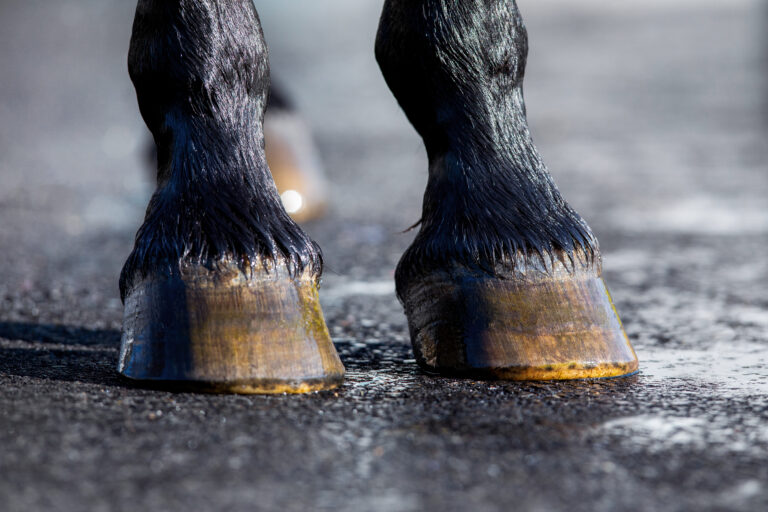
In veterinary practice, “moral distress” is often triggered by situations that challenge how we think we ought to practice veterinary medicine, how patients ought to be treated and how we ought to meet our perceived professional obligations (Crane et al, 2015).1 Research shows that these challenges occur frequently and with significant impacts on our professional quality of life.
A 2012 study of veterinarians in the United Kingdom revealed that the majority of those surveyed reported facing ethical dilemmas at least once per week. The most distressing situations involving the euthanasia of “fixable” animals, financial limitations on treatment and clients who wished to continue treatment when doing so was ill-advised.2
A more recent study by Moses, Mallowney & Boyd3 revealed that more than 70% of American veterinarians surveyed reported experiencing obstacles in providing proper patient care.
In that study, 77% reported that ethical dilemmas in patient care have caused them moderate to severe distress, and 70% reported having little to no training in how to resolve these conflicts of care.
It is increasingly evident that ethical dilemmas are a leading cause of work-related stress.
When professional caregivers experience ethical dilemmas that are difficult to adequately resolve, the moral distress that results can cause feelings of apathy, avoidance of difficult interactions, reduced quality of care and symptoms of burnout.4
It is imperative, then, that veterinarians learn how to successfully problem-solve these dilemmas as they arise. However, training in applied clinical ethics is rare in veterinary training programs, and formal mechanisms for working through ethical dilemmas—such as the ethics consultation services found in most human hospitals—are rare (and particularly absent for those in ambulatory practice).
Thankfully, some of the concepts that are used in ethics consultation services can be adapted for rapid deployment in the field.
Working Through the ‘Ought’ Factor
Many core concerns tend to underlie ethical quandaries, including concerns about client ability to make sound medical decisions, treatment futility, patient quality of life and challenging client behaviors.
Additional worries about conflicts of interest, the allocation of scarce resources (such as opioid pain medications during drug shortages) and the boundaries of treatment (including experimental/novel treatments) can also arise.
Whenever we feel like we are blocked in some way from practicing as we “ought” to, an ethical challenge is likely at hand. How we think through these situations can either amplify or reduce our moral distress.4
A field model for crafting ethical solutions would require that we first press “pause” on our own response in order to accurately identify the core ethical challenge at play.
The “ought” factor often involves deeply held feelings about what we believe, what we value and our purpose at work. It is critical that we be able to differentiate an automatic (and usually emotional) response to uncomfortable situations from a well-reasoned, neutral and educated one. Once we are able to press “pause,” we can proceed to clarifying, evaluating and problem-solving the facets of an ethical dilemma.
This kind of ethical analysis has roots in the constructs and models being used to help medical teams problem-solve dilemmas of care in human hospitals. Four core constructs of biomedical ethics5 provide the foundation for weighing the needs of your patient, the desires of the client and the tools/treatments available in light of what is possible, probable and/or “the least worst” outcome in any case5. They are as follows:
1. Autonomy involves preserving the right of clients to make informed decisions free of coercion and coaxing while maximizing their understanding of the risks and benefits of any potential procedure or treatment.
2. Beneficence involves making sure that we provide care that can plausibly help the patient to achieve a reasonable medical outcome; as such, over- and under-treatment are to be avoided.
3. Justice involves addressing fairness in the distribution of scarce resources, fairly managing competing needs (the needs of the client, the patient and others involved in patient care), fulfilling our rights and obligations as professional caregivers and avoiding potential conflicts of interest.
4. Non-maleficence reflects the edict to “first, do no harm” (to the patient or to others in society).
These constructs can be applied to the following four topics of evaluation/conversation:5
1. What are the medical indications in this case? How do we balance potential benefits and potential harm?
2. What are the client’s preferences (and limits)?
3. What quality of life issues need to be considered, both for the patient and the client?
4. Are there contextual features that need to be considered, such as availability of medications, barn resources, legal considerations (particularly related to neglect, abuse and ownership) or other constraints related to care?
A more succinct model of analysis can be found via the CASES model, which was created by the Veterans’ Administration to guide consults on ethical dilemmas in medicine.6 With CASES, the first order of business is to clarify the core ethical question or problem: What is the foundational concern in this case, and what ethical issues are involved?
Next, it is important to assemble relevant case information from those who are involved in care; this might require touching base with other care providers to understand the scope of the medical concerns and care.
A synthesis of this information should focus on identifying—and deliberating between—ethically justifiable solutions. These solutions might not be ideal, of course, but sometimes identifying the “least worst” solution for the patient helps caregivers to engage clients in more productive problem-solving.
Last, explaining these options to those involved (including the client), and the provision of evaluation, support and follow-up, helps to bring closure to situations that otherwise feel both daunting and unsolvable.
Brief Analysis in the Field
Not everyone has the time and resources to consult with an ethics team—or even a trusted colleague—when a difficult situation arises in practice. If we distill the tools described above, though, we can still develop a systematic and reliable method to problem-solve ethical dilemmas in the moment.
Here are a few tips:
• First, check in with yourself and take a breath. Where is the “ought,” what is my automatic (emotional) response, and what is a more reasoned response to this problem?
• Collect data. If possible, allow others involved in patient care (farriers, trainers, grooms) to add their two cents, as they might have useful collateral information. When this isn’t possible, it can be good to call in a quick consult with a trusted colleague to make sure you aren’t overlooking something in your reasoning.
• Delay judgment and assess the objective data. Pay close attention to the patient’s condition, treatment options (the good, the bad and the ugly), client preferences, client resources and any other factors that might influence case outcome
• Evaluate evidence. This can determine how you might work with the client to achieve the best outcome—or the “least worst” outcome if the best outcome seems out of reach. Then have an honest discussion with the client about how to work toward that outcome for the patient within the means and constraints of the situation.
Take-Home Message
It goes without saying that veterinary professionals are driven, high-achieving performers who might struggle when ideal patient outcomes are not achieved. The high expectations we set for ourselves and others might not serve us well when the realities of human behavior, life strain and resource allocation are brought to bear on patient care.
Recognizing that we can only do the very best we can—with the tools and teams we have and with the best and clearest of intentions—can help us to find peace with processes and situations that are inherently unpredictable and often flawed.
While we cannot prevent ethically and morally charged situations from arising in the course of practice, we can develop a toolkit that enables us to problem-solve them.
When faced with ethical dilemmas in practice, remember to employ the following tools:
• PAUSE and assess the “ought.”
• CLARIFY the root of the ethical problem.
• ASSEMBLE information and evidence related to medical concerns and options in terms of the Core Four constructs. Strive to be systematic and neutral.
• SYNTHESIZE what you know, and discuss concerns and options with the client to create a path forward.
• EVALUATE the process (what went well and what didn’t?), provide support to the client and the patient’s other caregivers, and follow up when necessary.
• ENGAGE in good self-care to counteract the effects of ethical dilemmas.
About the Author: Jeannine Moga is an “animal-informed” licensed clinical social worker practicing at the intersection of human and animal issues to improve individual and community health. She served as the founding director of Veterinary Social Services at the University of Minnesota’s Veterinary Medical Center (2004-2012) as well as the founder of Family & Community Services at NC State University’s Veterinary Hospital (2012-2018), where she created the first known veterinary clinical ethics consultation committee. She is now in private practice in southeast Virginia, where she provides practice consultation and education to veterinary providers, also maintaining a clinical practice specializing in grief and loss, chronic stress, burnout and human-animal relationships. She provides training for social services, veterinary medical and animal welfare workers across the country.
References
1. Crane, M.; Phillips, J.; Karin, E. (2015). Trait perfectionism strengthens the negative effects of moral stressors occurring in veterinary practice. Aus Vet Jrnl, 93(10): 354-360.
2. Batchelor, C.; McKeegan, D. (2012). Survey of the frequency and perceived stressfulness of ethical dilemmas encountered in UK veterinary practice. Vet Rec, 170(1): 19-19.
3. Moses, L.; Mallowney, M.; Boyd, J. (2018). Ethical conflict and moral distress in veterinary practice. Jrnl Vet Int Med, 32(6): 2115-2122
4. Weber, E. (2016). Moral distress, workplace health, and intrinsic harm. Bioethics, 30(4): 244-250.
5. Jonsen, A.; Siegler, M.; Winslade, W. (2015). Clinical Ethics: A Practical Approach to Ethical Decisions in Clinical Medicine. New York: McGraw Hill.
6. National Center for Ethics in Health Care. (2015). Ethics Consultation: Responding to Ethics Questions in Health Care. 2nd ed. Washington, DC: U.S. Department of Veterans Affairs.

![[Aggregator] Downloaded image for imported item #18216](https://s3.amazonaws.com/wp-s3-equimanagement.com/wp-content/uploads/2025/09/30141837/EDCC-Unbranded-8-scaled-1-768x512.jpeg)


